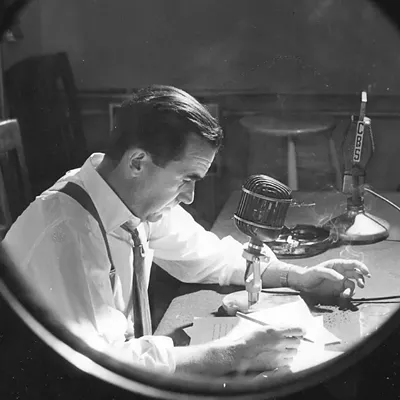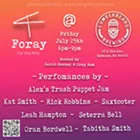That's at least according to tenor Albert Mazibuko, a member of the all-male South African a cappella singing group since 1969 and a cousin of its founder, Joseph Shabalala. "The audience reaction in the United States is amazing," the soft-spoken Mazibuko says. "The American listeners seem to understand our music even more than people who speak our language. When we meet them after the shows, and when they explain the meanings to the songs we are singing, it's really amazing how much they actually understand."
And it's not always the same crowds that show up, he says. "We have toured the United States twice a year for the last 23 years, and what is good about it also is that it's not always all the same faces. We have a new audience almost every night. When we do see people we recognize from past tours, they are usually bringing new people with them."
Such is the infectious nature of the a cappella isicathamiya harmonies, the traditional singing style of the Zulu people, and the totally charming "tip-toe guys" dancing of Ladysmith Black Mambazo. They'll appear at the Bing on Tuesday.
& lt;span class= & quot;dropcap & quot; & T & lt;/span & he Ladysmith singing and dancing styles were developed during the late 19th century, when low-paid laborers in South African townships would get together to entertain each other on their one night a week off. The soft harmonies and tip-toe dance steps evolved so that the performers could do their thing without waking the security guards at their work camps.
Ladysmith Black Mambazo first came to the attention of mainstream listeners in the United States when they appeared on Paul Simon's groundbreaking 1986 album Graceland. But LBM had existed in one form or another for more than 20 years before Simon traveled to South Africa to "discover" them.
Shabalala, who is now in his mid-60s and recently announced that he would soon retire from the group, formed what would become Ladysmith Black Mambazo in 1960 under the name Ezimnyama Ngenkani ("The Black Ones"). He first recruited friends and family, but Mazibuko says Shabalala did not find a solid core of serious members until 1969. By that time, the group was known as Ladysmith Black Mambazo, named for its town of origin (Ladysmith), the most powerful breed of oxen (black) and the Zulu word for ax (mambazo), which signified the ability to "chop down" any musical rivals.
Mazibuko says that Shabalala all along wanted to do more than simply form a singing and dancing group: "He always wanted to compose songs that encourage people to strive to become better, to empower the people and to empower ourselves."
& lt;span class= & quot;dropcap & quot; & T & lt;/span & he theme of empowerment is evident in the group's January release, Ilembe: Honoring Shaka Zulu (Heads Up International). The album pays tribute to the legendary South African icon Shaka Zulu, the first king of the Zulu nation.
Shaka Zulu, says Mazibuko, "was a great warrior and a great leader, a diplomat and a true visionary who fought for his people but who also sought peace. He was also an athlete, a dancer and a singer, so he is especially inspirational to us."
In the late 18th century, the charismatic Shaka, though he was born into poverty, united several disorganized subtribes to build a nation 250,000 strong.
"He never complained about his upbringing," Mazibuko says. "Whatever people were, he respected their differences and brought them together with a common purpose so they could be one large tribe."
Ladysmith Black Mambazo will sing and sway at the Bing on Tuesday, March 11, at 8 pm. Tickets: $32. Visit www.mambazo.com or call 227-7638. This article originally appeared in Tucson Weekly.














